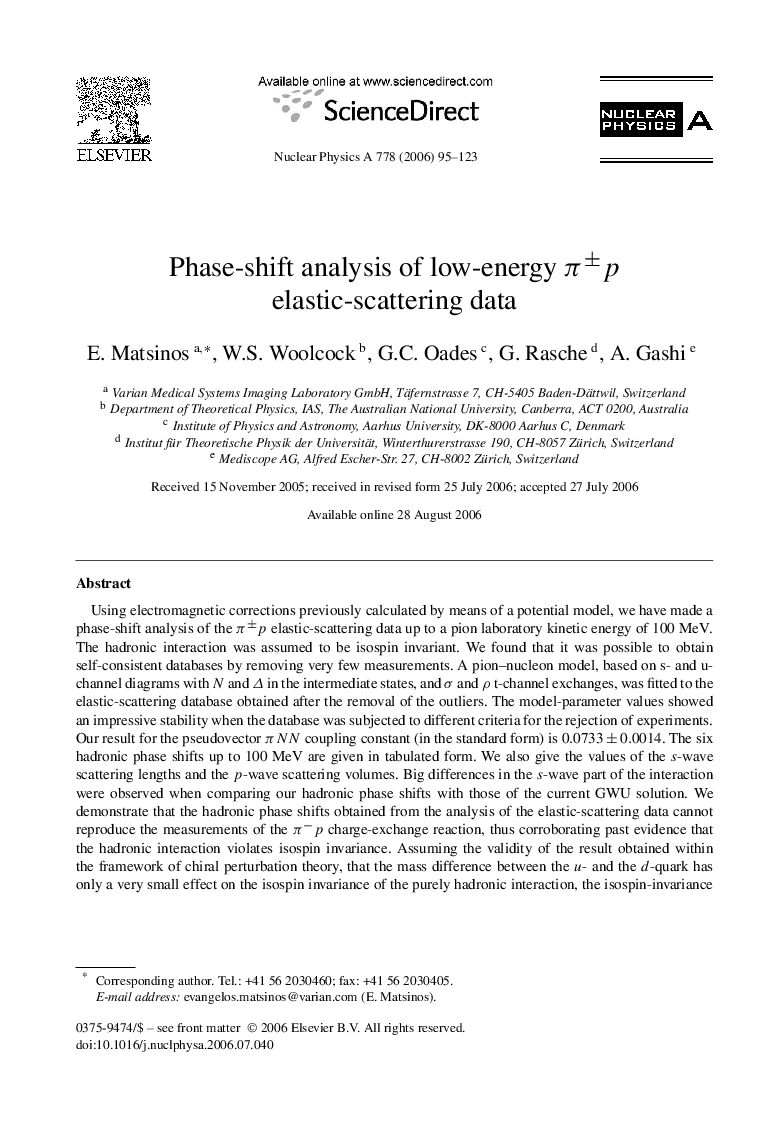| Article ID | Journal | Published Year | Pages | File Type |
|---|---|---|---|---|
| 1837942 | Nuclear Physics A | 2006 | 29 Pages |
Using electromagnetic corrections previously calculated by means of a potential model, we have made a phase-shift analysis of the π±p elastic-scattering data up to a pion laboratory kinetic energy of 100 MeV. The hadronic interaction was assumed to be isospin invariant. We found that it was possible to obtain self-consistent databases by removing very few measurements. A pion–nucleon model, based on s- and u-channel diagrams with N and Δ in the intermediate states, and σ and ρ t-channel exchanges, was fitted to the elastic-scattering database obtained after the removal of the outliers. The model-parameter values showed an impressive stability when the database was subjected to different criteria for the rejection of experiments. Our result for the pseudovector πNN coupling constant (in the standard form) is 0.0733±0.0014. The six hadronic phase shifts up to 100 MeV are given in tabulated form. We also give the values of the s-wave scattering lengths and the p-wave scattering volumes. Big differences in the s-wave part of the interaction were observed when comparing our hadronic phase shifts with those of the current GWU solution. We demonstrate that the hadronic phase shifts obtained from the analysis of the elastic-scattering data cannot reproduce the measurements of the π−p charge-exchange reaction, thus corroborating past evidence that the hadronic interaction violates isospin invariance. Assuming the validity of the result obtained within the framework of chiral perturbation theory, that the mass difference between the u- and the d-quark has only a very small effect on the isospin invariance of the purely hadronic interaction, the isospin-invariance violation revealed by the data must arise from the fact that we are dealing with a hadronic interaction which still contains residual effects of electromagnetic origin.
